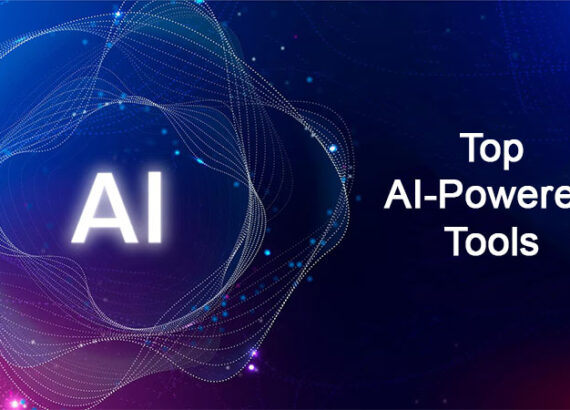ChatGPT vs Human: Will AI Take Over Our Conversations?
In recent years, advancements in artificial intelligence (AI) have given rise to a new frontier in human-computer interaction: chatbots. These conversational agents, powered by sophisticated language models like ChatGPT developed by OpenAI, have become increasingly prevalent in various industries. Understanding ChatGPT vs Human, From customer service to virtual assistants, AI chatbots are revolutionizing the way we engage in conversations.
However, as these AI-powered chatbots become more sophisticated, questions arise about their potential to take over human conversations entirely. This article delves into the fascinating world of AI chatbots, explores their capabilities and limitations, and ponders the future of human interaction in an increasingly AI-driven landscape.
1. Introduction: The Rise of AI Chatbots
Artificial Intelligence (AI) has been making significant advancements in various fields, and one area where it’s gaining ground is in chatbots. These computer programs, designed to simulate human conversation, are becoming increasingly prevalent in our everyday lives. But what exactly are chatbots, and how have they evolved?
1.1 What are Chatbots?
Chatbots are AI-powered virtual assistants that aim to communicate and interact with humans conversationally. You might have encountered them on websites, messaging apps, or even voice-based virtual assistants like Siri or Alexa. They use natural language processing and machine learning algorithms to understand queries, provide information, and even assist with tasks.
1.2 Evolution of AI Chatbots
Initially, they were simple rule-based systems that followed pre-programmed responses. However, with advancements in AI and machine learning techniques, chatbots have become more sophisticated. Modern chatbots, like OpenAI’s ChatGPT, utilize large language models trained on extensive text data to generate intelligent and contextually relevant responses.

2. Understanding ChatGPT vs Human: An Overview of OpenAI’s Language Model
OpenAI’s ChatGPT is one of the most advanced AI language models out there.
2.1 What is ChatGPT?
ChatGPT is trained on a massive amount of text data from the internet, allowing it to understand and generate human-like responses. Unlike simpler chatbots, ChatGPT has a broader range of knowledge and can engage in more dynamic conversations.
2.2 How Does ChatGPT Work?
ChatGPT relies on a technique called deep learning, specifically a type of neural network architecture called a transformer. These models break down sentences into smaller units called tokens, enabling them to process and understand the relationships between words and phrases. With its vast amount of training data, ChatGPT can generate coherent responses based on the context it receives.
3. The Role of Humans in Conversations: Empathy, Understanding, and Context
While AI chatbots like ChatGPT have made significant strides, there are still crucial aspects where human conversation excels.
3.1 The Importance of Human Emotional Intelligence
One of the strengths humans possess is emotional intelligence—the ability to understand and empathize with others. While AI chatbots can generate responses, they often lack the emotional depth and nuanced understanding that humans bring to conversations. Empathy plays a vital role in establishing meaningful connections and providing support.
3.2 Contextual Understanding and Interpretation
Humans have a remarkable ability to understand context, interpret ambiguous statements, and make inferences based on subtle cues. On the other hand, AI chatbots like ChatGPT primarily rely on patterns in their training data and might struggle with contextual understanding. This can result in responses that miss the mark or fail to capture the intended meaning.
4. Strengths and Limitations of AI Chatbots: Accuracy vs. Creativity
AI chatbots have their strengths, but they also have certain limitations that set them apart from human conversations.
4.1 Accuracy and Efficiency of AI Chatbots
One of the key advantages of AI chatbots is their ability to process and recall vast amounts of information quickly. They can deliver accurate and consistent responses, making them highly efficient in certain scenarios. AI chatbots excel at tasks where precision and accuracy are paramount.
4.2 The Creative Limitations of AI Chatbots
While AI chatbots can generate impressive responses, they often lack genuine creativity. They rely on patterns learned from existing data and struggle to generate novel ideas or think outside the box. This limitation makes it challenging for them to engage in truly imaginative or abstract conversations that require human-level creativity.
In conclusion, AI chatbots like ChatGPT have certainly improved our ability to interact with technology. They can provide accurate information and assist with various tasks. However, they still fall short in terms of emotional intelligence, contextual understanding, and creative thinking—essential aspects that make human conversations valuable and irreplaceable. So, while AI can augment our conversations, it’s unlikely to take over entirely. After all, who could resist the unique wit and personality that humans bring to the table?
5. Ethical Implications: Balancing AI Advancements with Human Interaction
In our quest for technological advancements, it is crucial to consider the ethical implications of integrating AI into our conversations. While AI chatbots offer convenience and efficiency, we must ensure a delicate balance between automation and genuine human interaction.
5.1 Privacy and Security Concerns
One of the primary concerns surrounding AI chatbots is the protection of privacy and security. As conversations become more automated, there is a risk of sensitive information being mishandled or falling into the wrong hands. It’s essential to establish robust security measures to safeguard personal data and ensure users’ trust in these systems.
5.2 Bias and Discrimination in AI Chatbots
Another significant ethical concern is the potential for bias and discrimination in AI chatbots. Since these systems learn from existing data, they can inadvertently perpetuate societal biases. Developers must be proactive in addressing this issue by implementing rigorous testing, diverse training data, and ongoing monitoring to minimize biases in AI chatbot responses.
6. Human Touch vs. Convenience: The User Perspective
As AI chatbots become more prevalent, it is essential to understand how users perceive these interactions. Striking the right balance between the human touch and convenience is crucial for creating meaningful conversations.
6.1 User Preferences in Conversations
User preferences vary when it comes to conversational experiences. Some may prefer the convenience and efficiency of AI chatbots, while others value the warmth and empathy of human interactions. Recognizing and respecting these preferences is vital to providing personalized experiences that cater to individual needs.
6.2 The Impact of AI Chatbots on User Experience
AI chatbots have the potential to enhance the user experience significantly. With their ability to understand context, provide quick responses, and offer personalized recommendations, they can streamline conversations and make interactions more efficient. However, it’s important not to sacrifice the human touch entirely, as it plays a crucial role in building rapport and addressing complex emotional needs.
7. The Future of Conversations: Collaborative Interaction between AI and Humans
Rather than pitting AI against humans, the future lies in collaborative interaction, where AI and humans complement each other’s strengths to create richer conversational experiences.
7.1 Augmenting Human Conversations with AI
AI has the potential to augment human conversations by providing real-time information, automating repetitive tasks, and analyzing vast amounts of data. By offloading mundane tasks to AI chatbots, humans can focus on higher-level thinking, creativity, and emotional connection, resulting in more meaningful interactions.
7.2 Opportunities for AI-Human Collaboration
AI and humans can collaborate to tackle complex challenges together. AI systems can provide insights and suggestions, while humans bring empathy, intuition, and ethical decision-making to the table. This partnership between AI and humans opens up new opportunities for innovation, problem-solving, and fostering deeper connections.
8. Navigating the AI-Human Conversation Landscape
As AI continues to evolve, finding the right balance between AI and human conversations is essential. We must address ethical concerns, prioritize user preferences, and embrace collaborative interaction. By navigating this landscape thoughtfully, we can ensure that AI chatbots enhance our conversations without overshadowing the value of genuine human connection.
9. Conclusion
As AI chatbots continue to evolve and become more integrated into our daily lives, it is crucial to strike a balance between the convenience they offer and the irreplaceable qualities of human conversation. While AI chatbots excel in accuracy and efficiency, they still lack the depth of understanding, empathy, and contextual interpretation that humans bring to conversations.
Navigating the AI-human conversation landscape requires careful consideration of ethical implications, user preferences, and the potential for collaborative interaction. By harnessing the strengths of AI chatbots and preserving the unique contributions of human conversation, we can shape a future where AI and humans seamlessly coexist, enhancing our interactions and experiences in unprecedented ways.
FAQ
1. Can AI chatbots completely replace human conversations?
While AI chatbots have made significant advancements in natural language processing, they still have limitations when it comes to understanding complex emotions, and context, and interpreting nuanced language. Human conversations involve empathy, intuition, and a deep understanding of human experiences that AI chatbots are yet to fully replicate. Therefore, a complete replacement of human conversations by AI chatbots is unlikely in the foreseeable future.
2. Are AI chatbots capable of creative responses?
AI chatbots like ChatGPT have shown impressive capabilities in generating text that resembles human conversation. However, their responses are based on patterns and data they have been trained on, meaning they lack true creativity and originality. While they can generate plausible and contextually relevant responses, their ability to come up with truly novel ideas or solutions is currently limited.
3. What are the ethical concerns surrounding AI chatbots?
Ethical concerns related to AI chatbots include issues such as privacy and security, bias and discrimination, and the potential for misinformation. AI chatbots may inadvertently violate user privacy by collecting and storing personal information. They can also perpetuate biases present in the data they were trained on, leading to biased responses or discriminatory behaviour. Additionally, there is a risk of AI chatbots spreading misinformation if they are not properly regulated or supervised.
4. How can AI and humans collaborate in conversations?
The future of conversations lies in collaborative interaction between AI and humans. AI chatbots can assist humans by providing accurate information, answering routine inquiries, and automating repetitive tasks. Humans, on the other hand, bring emotional intelligence, critical thinking, and creativity to conversations. By leveraging AI as a tool to enhance human conversations, we can create more meaningful and efficient interactions that combine the strengths of both AI and human intelligence.
Thank you for reading 🙂
Buy Web Hosting at an affordable price: Buy Now
If you want to build your website at an affordable price contact: www.nextr.in
Read this: How To Become A Web Developer?


















